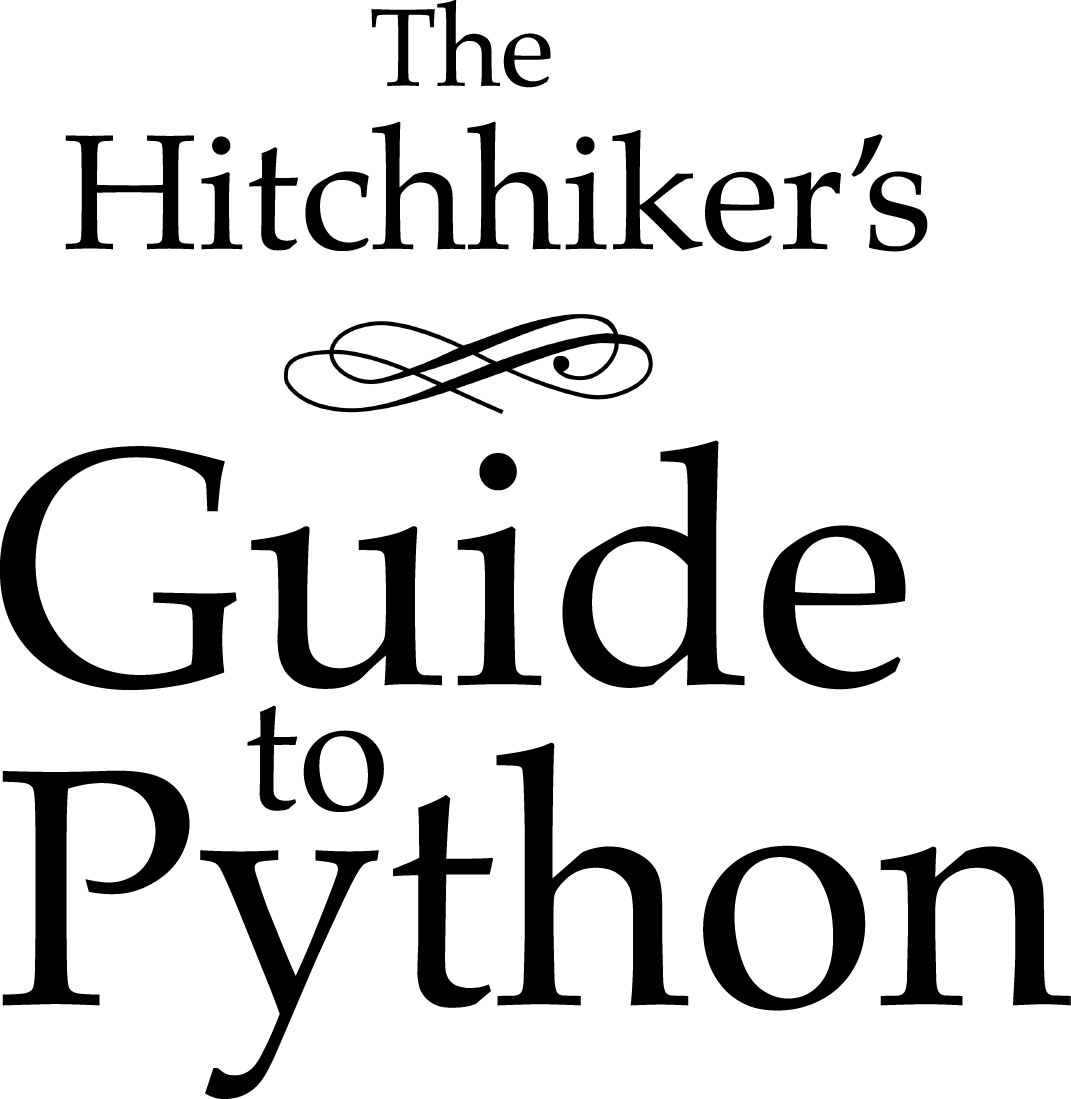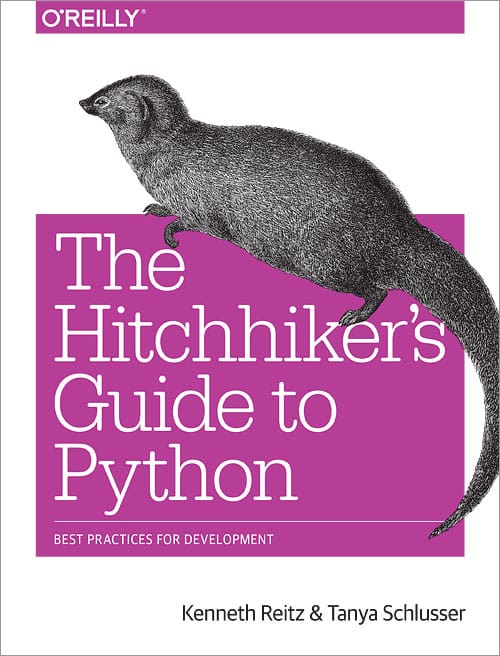Web Applications & Frameworks¶

As a powerful scripting language adapted to both fast prototyping and bigger projects, Python is widely used in web application development.
Context¶
WSGI¶
The Web Server Gateway Interface (or “WSGI” for short) is a standard interface between web servers and Python web application frameworks. By standardizing behavior and communication between web servers and Python web frameworks, WSGI makes it possible to write portable Python web code that can be deployed in any WSGI-compliant web server. WSGI is documented in PEP 3333.
Frameworks¶
Broadly speaking, a web framework consists of a set of libraries and a main handler within which you can build custom code to implement a web application (i.e. an interactive web site). Most web frameworks include patterns and utilities to accomplish at least the following:
- URL Routing
- Matches an incoming HTTP request to a particular piece of Python code to be invoked
- Request and Response Objects
- Encapsulates the information received from or sent to a user’s browser
- Template Engine
- Allows for separating Python code implementing an application’s logic from the HTML (or other) output that it produces
- Development Web Server
- Runs an HTTP server on development machines to enable rapid development; often automatically reloads server-side code when files are updated
Django¶
Django is a “batteries included” web application framework, and is an excellent choice for creating content-oriented websites. By providing many utilities and patterns out of the box, Django aims to make it possible to build complex, database-backed web applications quickly, while encouraging best practices in code written using it.
Django has a large and active community, and many pre-built re-usable modules that can be incorporated into a new project as-is, or customized to fit your needs.
There are annual Django conferences in the United States, Europe, and Australia.
The majority of new Python web applications today are built with Django.
Flask¶
Flask is a “microframework” for Python, and is an excellent choice for building smaller applications, APIs, and web services.
Building an app with Flask is a lot like writing standard Python modules, except some functions have routes attached to them. It’s really beautiful.
Rather than aiming to provide everything you could possibly need, Flask implements the most commonly-used core components of a web application framework, like URL routing, request and response objects, and templates.
If you use Flask, it is up to you to choose other components for your application, if any. For example, database access or form generation and validation are not built-in functions of Flask.
This is great, because many web applications don’t need those features. For those that do, there are many Extensions available that may suit your needs. Or, you can easily use any library you want yourself!
Flask is default choice for any Python web application that isn’t a good fit for Django.
Falcon¶
Falcon is a good choice when your goal is to build RESTful API microservices that are fast and scalable.
It is a reliable, high-performance Python web framework for building large-scale app backends and microservices. Falcon encourages the REST architectural style of mapping URIs to resources, trying to do as little as possible while remaining highly effective.
Falcon highlights four main focuses: speed, reliability, flexibility, and debuggability.
It implements HTTP through “responders” such as on_get(), on_put(), etc.
These responders receive intuitive request and response objects.
Tornado¶
Tornado is an asynchronous web framework for Python that has its own event loop. This allows it to natively support WebSockets, for example. Well-written Tornado applications are known to have excellent performance characteristics.
I do not recommend using Tornado unless you think you need it.
Pyramid¶
Pyramid is a very flexible framework with a heavy focus on modularity. It comes with a small number of libraries (“batteries”) built-in, and encourages users to extend its base functionality. A set of provided cookiecutter templates helps making new project decisions for users. It powers one of the most important parts of python infrastructure PyPI.
Pyramid does not have a large user base, unlike Django and Flask. It’s a capable framework, but not a very popular choice for new Python web applications today.
Masonite¶
Masonite is a modern and developer centric, “batteries included”, web framework.
The Masonite framework follows the MVC (Model-View-Controller) architecture pattern and is heavily inspired by frameworks such as Rails and Laravel, so if you are coming to Python from a Ruby or PHP background then you will feel right at home!
Masonite comes with a lot of functionality out of the box including a powerful IOC container with auto resolving dependency injection, craft command line tools, and the Orator active record style ORM.
Masonite is perfect for beginners or experienced developers alike and works hard to be fast and easy from install through to deployment. Try it once and you’ll fall in love.
FastAPI¶
FastAPI is a modern web framework for building APIs with Python 3.6+.
It has very high performance as it is based on Starlette and Pydantic.
FastAPI takes advantage of standard Python type declarations in function parameters to declare request parameters and bodies, perform data conversion (serialization, parsing), data validation, and automatic API documentation with OpenAPI 3 (including JSON Schema).
It includes tools and utilities for security and authentication (including OAuth2 with JWT tokens), a dependency injection system, automatic generation of interactive API documentation, and other features.
Web Servers¶
Nginx¶
Nginx (pronounced “engine-x”) is a web server and reverse-proxy for HTTP, SMTP, and other protocols. It is known for its high performance, relative simplicity, and compatibility with many application servers (like WSGI servers). It also includes handy features like load-balancing, basic authentication, streaming, and others. Designed to serve high-load websites, Nginx is gradually becoming quite popular.
WSGI Servers¶
Stand-alone WSGI servers typically use less resources than traditional web servers and provide top performance [1].
Gunicorn¶
Gunicorn (Green Unicorn) is a pure-Python WSGI server used to serve Python applications. Unlike other Python web servers, it has a thoughtful user interface, and is extremely easy to use and configure.
Gunicorn has sane and reasonable defaults for configurations. However, some other servers, like uWSGI, are tremendously more customizable, and therefore, are much more difficult to effectively use.
Gunicorn is the recommended choice for new Python web applications today.
Waitress¶
Waitress is a pure-Python WSGI server that claims “very acceptable performance”. Its documentation is not very detailed, but it does offer some nice functionality that Gunicorn doesn’t have (e.g. HTTP request buffering).
Waitress is gaining popularity within the Python web development community.
uWSGI¶
uWSGI is a full stack for building hosting services. In addition to process management, process monitoring, and other functionality, uWSGI acts as an application server for various programming languages and protocols – including Python and WSGI. uWSGI can either be run as a stand-alone web router, or be run behind a full web server (such as Nginx or Apache). In the latter case, a web server can configure uWSGI and an application’s operation over the uwsgi protocol. uWSGI’s web server support allows for dynamically configuring Python, passing environment variables, and further tuning. For full details, see uWSGI magic variables.
I do not recommend using uWSGI unless you know why you need it.
Server Best Practices¶
The majority of self-hosted Python applications today are hosted with a WSGI server such as Gunicorn, either directly or behind a lightweight web server such as nginx.
The WSGI servers serve the Python applications while the web server handles tasks better suited for it such as static file serving, request routing, DDoS protection, and basic authentication.
Hosting¶
Platform-as-a-Service (PaaS) is a type of cloud computing infrastructure which abstracts and manages infrastructure, routing, and scaling of web applications. When using a PaaS, application developers can focus on writing application code rather than needing to be concerned with deployment details.
Heroku¶
Heroku offers first-class support for Python 2.7–3.5 applications.
Heroku supports all types of Python web applications, servers, and frameworks. Applications can be developed on Heroku for free. Once your application is ready for production, you can upgrade to a Hobby or Professional application.
Heroku maintains detailed articles on using Python with Heroku, as well as step-by-step instructions on how to set up your first application.
Heroku is the recommended PaaS for deploying Python web applications today.
Eldarion¶
Eldarion (formerly known as Gondor) is a PaaS powered by Kubernetes, CoreOS, and Docker. They support any WSGI application and have a guide on deploying Django projects.
Templating¶
Most WSGI applications are responding to HTTP requests to serve content in HTML or other markup languages. Instead of directly generating textual content from Python, the concept of separation of concerns advises us to use templates. A template engine manages a suite of template files, with a system of hierarchy and inclusion to avoid unnecessary repetition, and is in charge of rendering (generating) the actual content, filling the static content of the templates with the dynamic content generated by the application.
As template files are sometimes written by designers or front-end developers, it can be difficult to handle increasing complexity.
Some general good practices apply to the part of the application passing dynamic content to the template engine, and to the templates themselves.
- Template files should be passed only the dynamic content that is needed for rendering the template. Avoid the temptation to pass additional content “just in case”: it is easier to add some missing variable when needed than to remove a likely unused variable later.
- Many template engines allow for complex statements or assignments in the template itself, and many allow some Python code to be evaluated in the templates. This convenience can lead to uncontrolled increase in complexity, and often make it harder to find bugs.
- It is often necessary to mix JavaScript templates with HTML templates. A sane approach to this design is to isolate the parts where the HTML template passes some variable content to the JavaScript code.
Jinja2¶
Jinja2 is a very well-regarded template engine.
It uses a text-based template language and can thus be used to generate any type of markup, not just HTML. It allows customization of filters, tags, tests, and globals. It features many improvements over Django’s templating system.
Here some important HTML tags in Jinja2:
{# This is a comment #}
{# The next tag is a variable output: #}
{{title}}
{# Tag for a block, can be replaced through inheritance with other html code #}
{% block head %}
<h1>This is the head!</h1>
{% endblock %}
{# Output of an array as an iteration #}
{% for item in list %}
<li>{{ item }}</li>
{% endfor %}
The next listings are an example of a web site in combination with the Tornado web server. Tornado is not very complicated to use.
# import Jinja2
from jinja2 import Environment, FileSystemLoader
# import Tornado
import tornado.ioloop
import tornado.web
# Load template file templates/site.html
TEMPLATE_FILE = "site.html"
templateLoader = FileSystemLoader( searchpath="templates/" )
templateEnv = Environment( loader=templateLoader )
template = templateEnv.get_template(TEMPLATE_FILE)
# List for famous movie rendering
movie_list = [[1,"The Hitchhiker's Guide to the Galaxy"],[2,"Back to future"],[3,"Matrix"]]
# template.render() returns a string which contains the rendered html
html_output = template.render(list=movie_list,
title="Here is my favorite movie list")
# Handler for main page
class MainHandler(tornado.web.RequestHandler):
def get(self):
# Returns rendered template string to the browser request
self.write(html_output)
# Assign handler to the server root (127.0.0.1:PORT/)
application = tornado.web.Application([
(r"/", MainHandler),
])
PORT=8884
if __name__ == "__main__":
# Setup the server
application.listen(PORT)
tornado.ioloop.IOLoop.instance().start()
The base.html file can be used as base for all site pages which are
for example implemented in the content block.
<!DOCTYPE HTML PUBLIC "-//W3C//DTD HTML 4.01//EN">
<html lang="en">
<html xmlns="http://www.w3.org/1999/xhtml">
<head>
<link rel="stylesheet" href="style.css" />
<title>{{title}} - My Webpage</title>
</head>
<body>
<div id="content">
{# In the next line the content from the site.html template will be added #}
{% block content %}{% endblock %}
</div>
<div id="footer">
{% block footer %}
© Copyright 2013 by <a href="http://domain.invalid/">you</a>.
{% endblock %}
</div>
</body>
The next listing is our site page (site.html) loaded in the Python
app which extends base.html. The content block is automatically set
into the corresponding block in the base.html page.
{% extends "base.html" %}
{% block content %}
<p class="important">
<div id="content">
<h2>{{title}}</h2>
<p>{{ list_title }}</p>
<ul>
{% for item in list %}
<li>{{ item[0]}} : {{ item[1]}}</li>
{% endfor %}
</ul>
</div>
</p>
{% endblock %}
Jinja2 is the recommended templating library for new Python web applications.
Chameleon¶
Chameleon Page Templates are an HTML/XML template engine implementation of the Template Attribute Language (TAL), TAL Expression Syntax (TALES), and Macro Expansion TAL (Metal) syntaxes.
Chameleon is available for Python 2.5 and up (including 3.x and PyPy), and is commonly used by the Pyramid Framework.
Page Templates add within your document structure special element attributes and text markup. Using a set of simple language constructs, you control the document flow, element repetition, text replacement, and translation. Because of the attribute-based syntax, unrendered page templates are valid HTML and can be viewed in a browser and even edited in WYSIWYG editors. This can make round-trip collaboration with designers and prototyping with static files in a browser easier.
The basic TAL language is simple enough to grasp from an example:
<html>
<body>
<h1>Hello, <span tal:replace="context.name">World</span>!</h1>
<table>
<tr tal:repeat="row 'apple', 'banana', 'pineapple'">
<td tal:repeat="col 'juice', 'muffin', 'pie'">
<span tal:replace="row.capitalize()" /> <span tal:replace="col" />
</td>
</tr>
</table>
</body>
</html>
The <span tal:replace=”expression” /> pattern for text insertion is common enough that if you do not require strict validity in your unrendered templates, you can replace it with a more terse and readable syntax that uses the pattern ${expression}, as follows:
<html>
<body>
<h1>Hello, ${world}!</h1>
<table>
<tr tal:repeat="row 'apple', 'banana', 'pineapple'">
<td tal:repeat="col 'juice', 'muffin', 'pie'">
${row.capitalize()} ${col}
</td>
</tr>
</table>
</body>
</html>
But keep in mind that the full <span tal:replace=”expression”>Default Text</span> syntax also allows for default content in the unrendered template.
Being from the Pyramid world, Chameleon is not widely used.
Mako¶
Mako is a template language that compiles to Python for maximum performance. Its syntax and API are borrowed from the best parts of other templating languages like Django and Jinja2 templates. It is the default template language included with the Pylons and Pyramid web frameworks.
An example template in Mako looks like:
<%inherit file="base.html"/>
<%
rows = [[v for v in range(0,10)] for row in range(0,10)]
%>
<table>
% for row in rows:
${makerow(row)}
% endfor
</table>
<%def name="makerow(row)">
<tr>
% for name in row:
<td>${name}</td>\
% endfor
</tr>
</%def>
To render a very basic template, you can do the following:
from mako.template import Template
print(Template("hello ${data}!").render(data="world"))
Mako is well respected within the Python web community.
References
| [1] | Benchmark of Python WSGI Servers |

